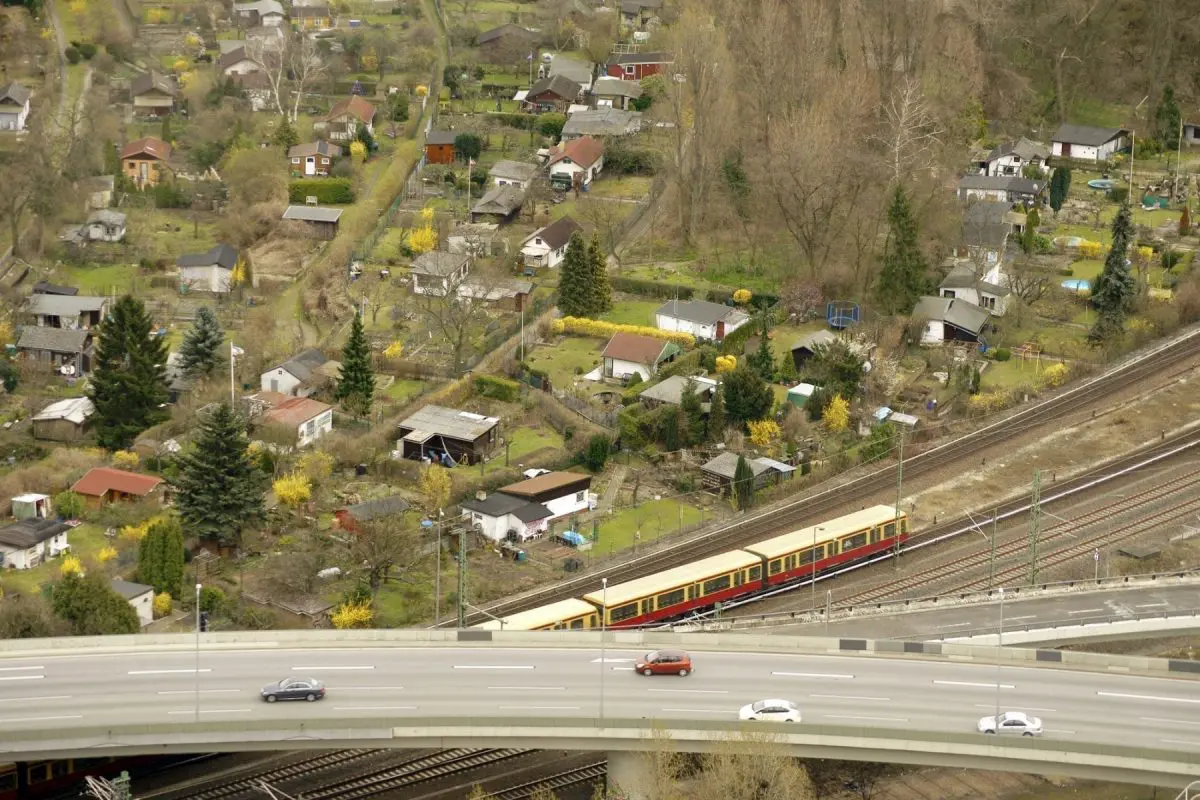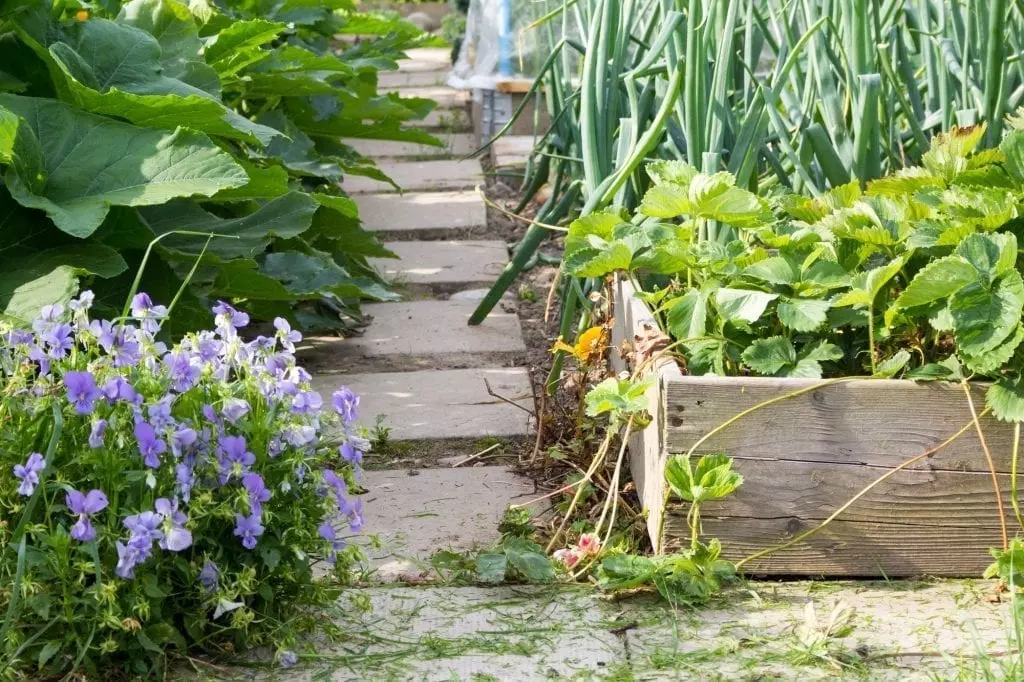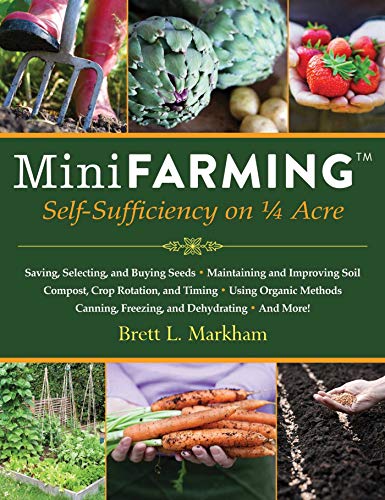You are traveling along in Germany, and suddenly, on the side of the railroad tracks, there is a cluster of fenced-in tiny houses surrounded by small gardens. Are these actual homes? Is it a campground for seasonal workers? Is this where the Garden Gnomes live when they aren’t in your garden?? These little plots of land are called Schrebergarten or Kleingarten. But what is a Schrebergarten? And how did the idea for tiny gardens get started?
I’m glad you asked because there is an interesting story here.

What is a Schrebergarten?
A Schrebergarten is a small plot of land in a community of small plots, typically located at the edge of a city. It’s like a community garden or allotment, but with space for a shed, hut, or tiny house. People rent their own fenced space, known as a Schrebergarten, often for years and even generations. Because so many Germans live in apartments without yards, the Schrebergarten allows them to get out in the fresh air and plant a garden. Germany has around 1.5 million of these little gardens, which is why they seem to be everywhere.
How did the Schrebergarten Movement Start?
The concept of a Schrebergarten was the brainchild of Dr. Moritz Schreber, a professor at Leipzig University who specialized in Children’s Health. He worried that children growing up in cities would be stunted physically and emotionally if they couldn’t go out to play in the countryside. He insisted that playgrounds be built to ensure that children received proper socialization.
After his death in 1864, Leipzig school principal Ernst Innozenz Hauschild established the first Schrebergarten as a playground for children on the outskirts of Leipzig. Vegetable gardens were planted to supplement the healthy air and exercise. And, slowly (much like kids’ baseball became Little League), the adults took control of the green play spaces and planted family gardens in the plots. Fences went in, and people made sure that their place was THEIRS alone. The Schreber movement, as it came to be called, spread across Germany and then out to other European countries. Pieces of land on the edge of cities were zoned for Schrebergartens and leased to families who could use them and keep them in the family, at least, until they stopped paying.
By the time World War 1 rolled around, most of these Schrebergärten had already converted to family garden plots. For many people, these gardens were all that stood between them and starvation. In 1919, the first rules and regulations were established to control the gardens and maintain order. By World War II, a Schrebergarten was a necessity for many city families who would not have otherwise found food. (This was depicted in the book “German Boy.” There is a scene where the family survives because Opa had a Schrebergarten and planted potatoes.)

In the 1950s, 1960s, and 1970s, the Schrebergarten took on a sort of Staycation feeling. You could spend the day puttering in your little domain. Eat your own veggies, maybe grill some meat, and watch the sun set over your plot of land. You might not have a house, but you could have a beautiful (but tiny) plot of land, just like any Baron. (Although, unlike a Baron, you aren’t free to run a motorized lawnmower during Ruhezeit, ie, the prescribed quiet times.)
In the 1980s and beyond, Schrebergarten was thought to be the center of “Kitch” in Germany—a place where lawn gnomes multiplied beyond all reason. It’s where your Opa would sit in his shorts, sandals, and black socks, watching the world go by while Oma puttered with her flowers.
Today, many people view Schrebergärten as quaint and somewhat old-fashioned. Why would you want to be tied to a plot of land in this time of plenty? Who has time for that? And yes, they can be a lot of work for a modern person with a job and kids who need to get to Fußball training. Luckily, hipsters are trying to bring Schrebergärten back to popularity. However, they are encountering a few issues. Unlike the original concept of an individual family garden for enjoying Fresh Air and doing whatever you want, today’s Schrebergarten has developed a reputation for being a miniature example of German hyper-Ordnung.
By Dan Mihai Pitea [CC BY-SA 4.0 (https://creativecommons.org/licenses/by-sa/4.0)], from Wikimedia Commons
These HIGHLY REGULATED gardens are not owned, they are leased. And when I say highly regulated, I might be understating. The list of rules and regulations pertaining to a Schrebergarten is a mile long. The Bundeskleingartengesetz (BKleingG) (Germany Small Garden Act) covers everything from the legal size of the garden (no more than 400 sq meters), to the legal size of the Schuppen (cottage) 24 sq meters (and you MAY NOT live in it), to what happens when the lessee dies (and, don’t ask, you can’t either be buried there or have your ashes scattered on the plot) (BTW, that’s not really part of this Gesetz, rather the one about burial).
Regulating a Schrebergarten
These HIGHLY REGULATED gardens are not owned; they are leased. And when I say highly regulated, I might be understating. The list of rules and regulations governing a Schrebergarten is a mile long. The Bundeskleingartengesetz (BKleingG) (Germany Small Garden Act) covers everything from the legal size of the garden (no more than 400 sq meters) to the legal size of the Schuppen (cottage) 24 sq meters (and you MAY NOT live in it), to what happens when the lessee dies. Don’t ask; you can’t be buried there or have your ashes scattered on the plot. (BTW, that’s not part of this Gesetz, but rather the one about burial).
And the bits that the BKleinG doesn’t cover are generally regulated by the busy-bodies in the local Garden Oversight committee. They are responsible for the rules about how high and thick your hedge may be, how often you may grill, and whether or not you may have a swing set. For example, many communities will allow you to have Chickens, but only a percentage of the Schrebergartens may have them at any given time. (So when those slots are filled, you and your hens are out of luck).
On the other hand, they do look nice. And like in a community with a Homeowner Committee, things are kept neat, safe, and orderly (oh gosh, that’s my German showing). For people who live in the city and want to get their hands in the soil or sit on their own (albeit small) plot of lawn, the Schrebergarten is the perfect solution.
How to Plant a Schrebergarten of Your Own
We don’t have Schrebergärten in the United States, but we do have community gardens. In England, there are Allotment Gardens. Get some ideas on how to make your own Miniature Paradise, perhaps to go with your Tiny House, here->
Mini Farming: Self-Sufficiency on 1/4 Acre Fresh Food from Small Spaces: The Square-Inch Gardener’s Guide to Year-Round Growing, Fermenting, and Sprouting
Fresh Food from Small Spaces: The Square-Inch Gardener’s Guide to Year-Round Growing, Fermenting, and Sprouting Kitchen Garden Revival: A modern guide to creating a stylish small-scale, low-maintenance edible garden
Kitchen Garden Revival: A modern guide to creating a stylish small-scale, low-maintenance edible garden The Suburban Micro-Farm: Modern Solutions for Busy People
The Suburban Micro-Farm: Modern Solutions for Busy People
Schrebergarten: Gartenparadiese anlegen, pflegen und genießen (Gartenpraxis und -gestaltung) (German Edition) Das Schrebergarten-Buch
Das Schrebergarten-Buch











I know you can’t live in the Schuppen, but can you stay overnight or over a weekend?
It depends on the association that your Kleingarten belongs to. Everything I read says that an occasional overnight is not a problem.. but living there is out of the question.
(Remember, you need to deal with toilet needs too)
A German Boy – great book. He had trouble getting it published. Finally U. of Mississippi (as I recall) took the chance. Others include Berlin Diary and Frauen.
That was a great book… I’ve handed it to my kids to help them understand a little about what their Opa went through
Yes, great book. My bookclub read it and my Onkel Johnny came to our meeting and told his story. They were Germans in the Ukraine who had to flee during the war.
My first trip to Germany withy my parents I stayed with my Tante’s and Onkles’s in and around Stuttgart-Rot & Zuffenhausen. Each day we would go to the Kleinegarten. These stiy are my favorite early memories. Each trip back I would make time to go to the garden. To help in the garden or sit back and have a Bier. This is where I fell in love with gardening but also Germany and cultural importance. After 14 trips I miss my family and friends
I hear you… I miss my people too.
And just sitting in the garden enjoying time together.
Don’t worry … now there are plenty of places to get a Doner kebab. Can build new memories.
There was a Schreberarten across from the American base (McNair Barracks) when we lived in Berlin. These gardens were very important to the Berliners, because they couldn’t go out of the city into the country.
The name of the German city where Dr. Moritz Schreber lived is LEIPZIG and not as it is twice misspelled above.
Apologies, my fingers and brain don’t alway coordinate as they should. I’ve made the corrections
Something similar to the “Dacha” system in the former Soviet Union, maybe it perdures till today
there is a beautiful example of one created by a young man just outside of munich..you can find him on instagram @_neon_beige__
Whenever I traveled to Germany, I took the train from Frankfurt to Würzburg. Just outside Frankfurt the Schrebergarten appeared. I knew than I was home.❤️
Like the allotments in Britain!
yes!
I came upon a most unusual plot in the middle of a group of Schrebergärten in Sindelfingen where the gentleman raised and bred exotic bird species, mostly colorful ones from Central and South America. Most of the plots around him were for flowers and vegetables so this one was so interesting and different. The man was most kind and welcomed me to his plot and explained what all the different birds were and where they were from.
Another lovely lady who had a nearby plot was very generous with her time in telling me all about the flowers she was growing, many of which I didn’t know the German names for. I loved spending time walking among the Schrebegärten. She even invited me for a glass of Zitronenlimonade. Such a sweet lady!
WOW! What a wonderful experience!
(who says Germans aren’t friendly??)
I grew up in Leimen. close to Heidelberg. My parents had a Schrebergarten, conveniently it was right across the street from our house. There was an area where no houses could be built because there were electric towers and high wires going across that portion of land.
In another part of our “Dorf” there was the Kleintierzuchtverein. (Small animal breed club). Somehow your story about the birds reminded me of that.
It was so smart of the town to use the land under powerlines to plant.
I am Rolf, born in Frankfurt am Main, 1939, now living in München (Munich). My parents had rented a Schrebergarten in Frankfurt, already before the war, and they enjoyed growing vegetables and a few fruit trees. My father built a small hut for keeping his gargen tools. After he war, my father having lst his life 1945, my grandparents, refugees from the east, lived with us, and our Opa kept the garden, in which he even grew tobacco. I went often in our little garden which I ĺoved.
What a great memory. It must have been such a lovely garden.
I absolutely loved this post! The concept of Schrebergärten is fascinating and I had no idea they played such an important role in urban gardening culture. It’s great to learn about the history and community aspect behind these little garden plots. I wish we had something similar in my city!
Learning a bit more of my German heritage thru these posts , is amazing for me. Especially learning about these allotted little gardens. I remember seeing some in 2012, and wanted to learn more about them. Thank you.
I’m glad you enjoyed it. Thank you!
Thank you for this article! My Opa and Oma had one these little gardens for as long as Opa was alive. Then they passed it on to a close cousin. I think it was the reason my mutti hated gardening. Not that she didn’t like the flowers and veggies, but she was tasked with watering and weeding. My Opa grew the best lettuce. And my Oma grew the most beautiful roses. My grandparents lived in Nurenberg. They kept the garden even thru WWII.
I think those gardens kept a lot of people going through WWII.
(I can understand your Mama’s feelings… I hate weeding)
I grew up in Germany with my grandparents. They had two plots – one was a garden, the other was for chickens and rabbits (part of the Kleintier-Zucht-Verein). The plots were separated and the chickens/rabbit plots were with other people’s chicken plots. Some had exotic pheasants or peacocks as well. I grew up in this little paradise – and I remember after grandpa died, grandma tried keeping it up – bicycling every day from the innercity to the outskirts where the plots were. My father had very little interest to help, and after many years she finally had to give it up. It broke my heart; she was getting on in age, and having lived through two world wars and losing everything twice had taken its toll. But I have fond memories of the old place and the old sheds that were falling apart when I was a kid – the old moldy smelling cot, the sacks of feed, the tiny wood stove, the old romantic oil painting on the wall depicting a dramatic landscape with a shepherd and his flock.. The outhouse was very old – every so often my father opened a hole in the ground next to it and scooped it out. The “mist” (the straw bedding from the rabbits) was piled up and used in fall for fertilizer – it got so warm in that pile that once in a while I saw an Igel (hedgehog) have their babies in there. We picked small crops from long established beds and fruit trees, and grandma was water-pressure-preserving much of it. Everything was stored in the cellar of the old 5-story house downtown, houses built right onto the next, where you still could see white painted arrows point into the basement windows (in case of an air raid, you were allowed to enter the basement through the window) – a reminder of a war not too long ago. I could see the train-tracks above, and I remember the trains coming through, the whistle and then the rumble that followed. I really miss all the old folks and their war-shaped lifestyle – frugal, no waste, be friendly and humble. Thank you for reminding me of one thing that shaped my character
Thank you so much for sharing these memories. My Oma grew and preserved so many fruits and vegetables, and she kept chickens and rabbits. After the war, they moved to a new house, and she was so happy to have a garden to provide food for her family. It really was a point of pride. And she kept it up into her 80s. I look at my garden now, so meager in comparison. But I still hate waste, and try to be friendly.